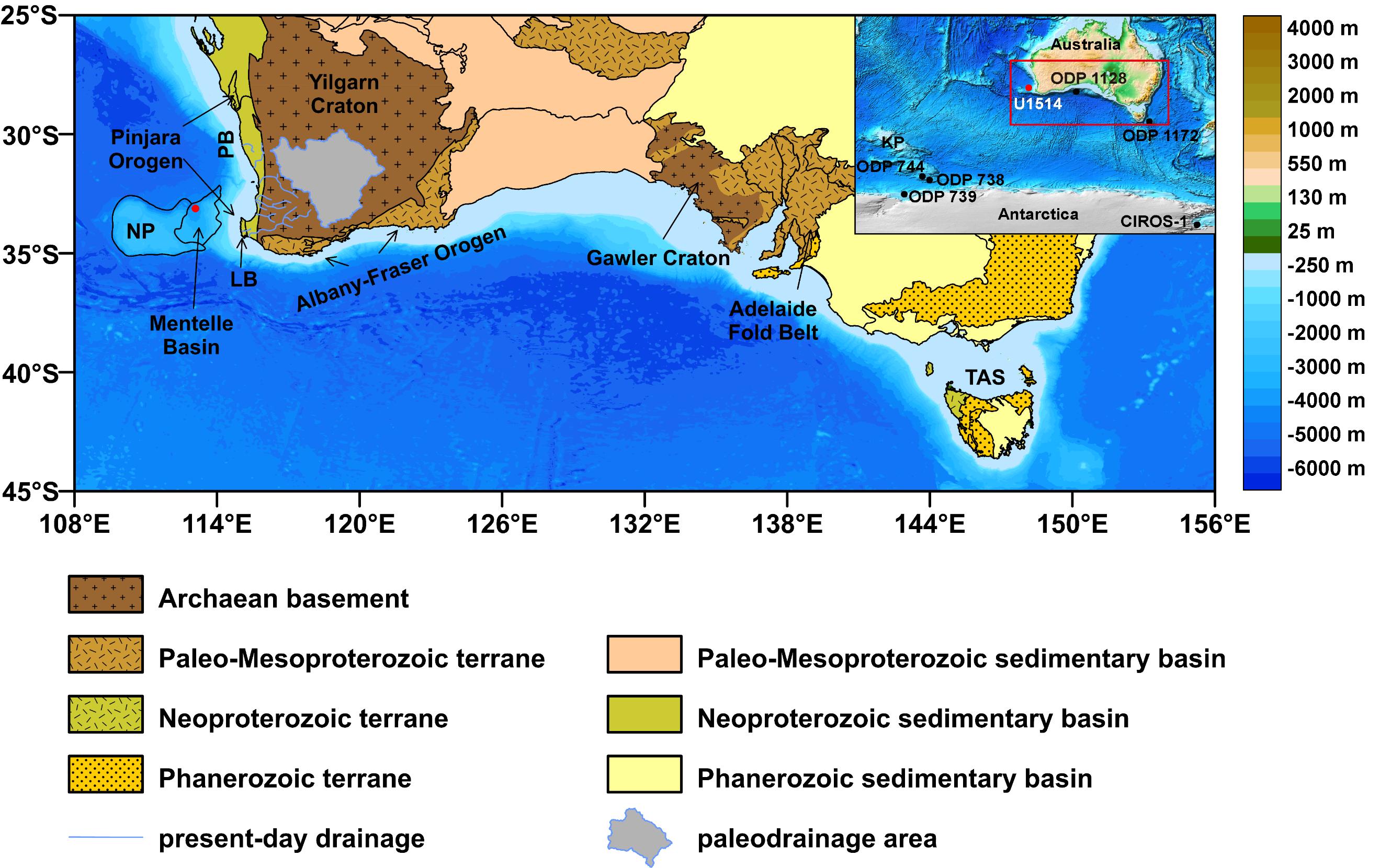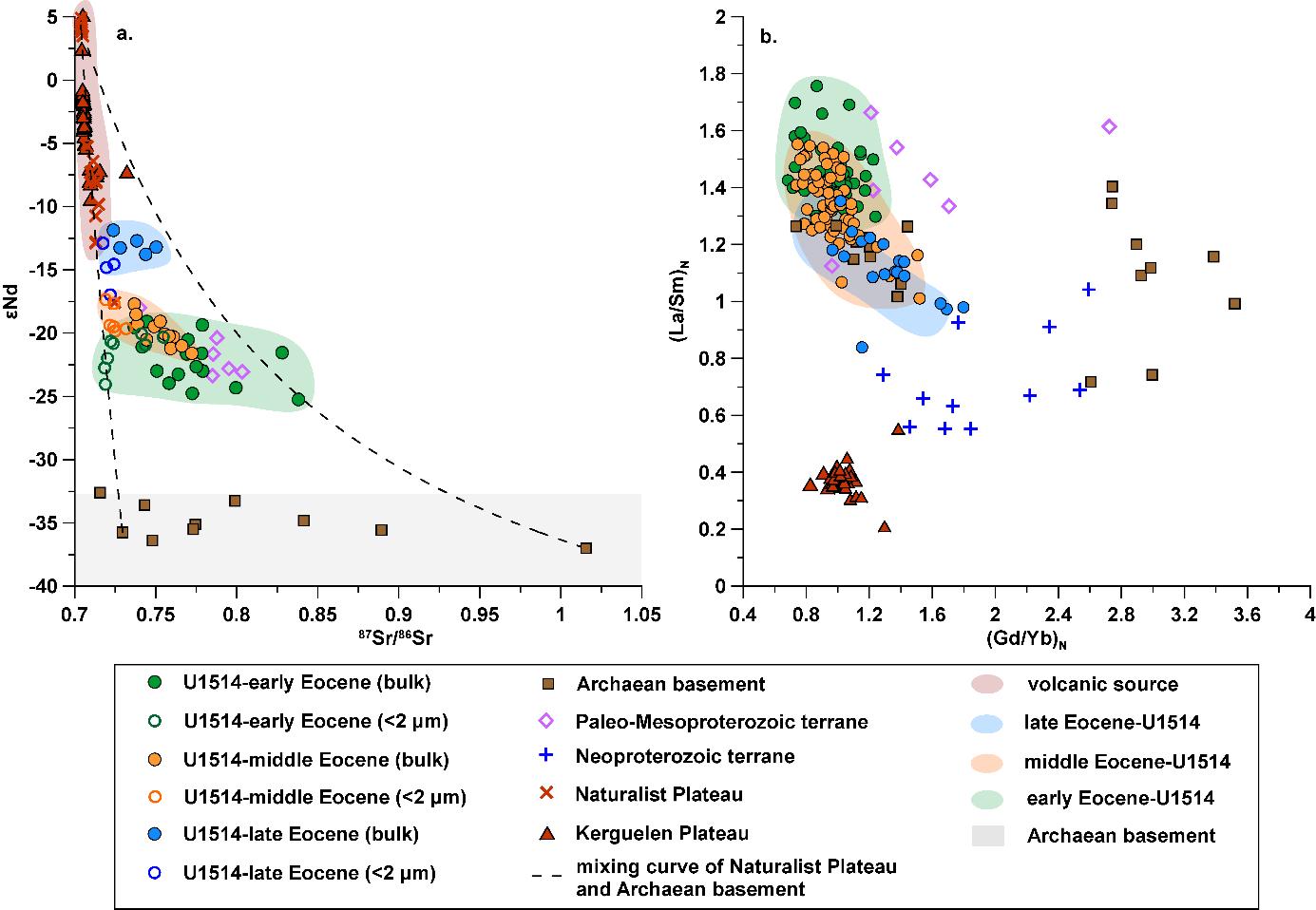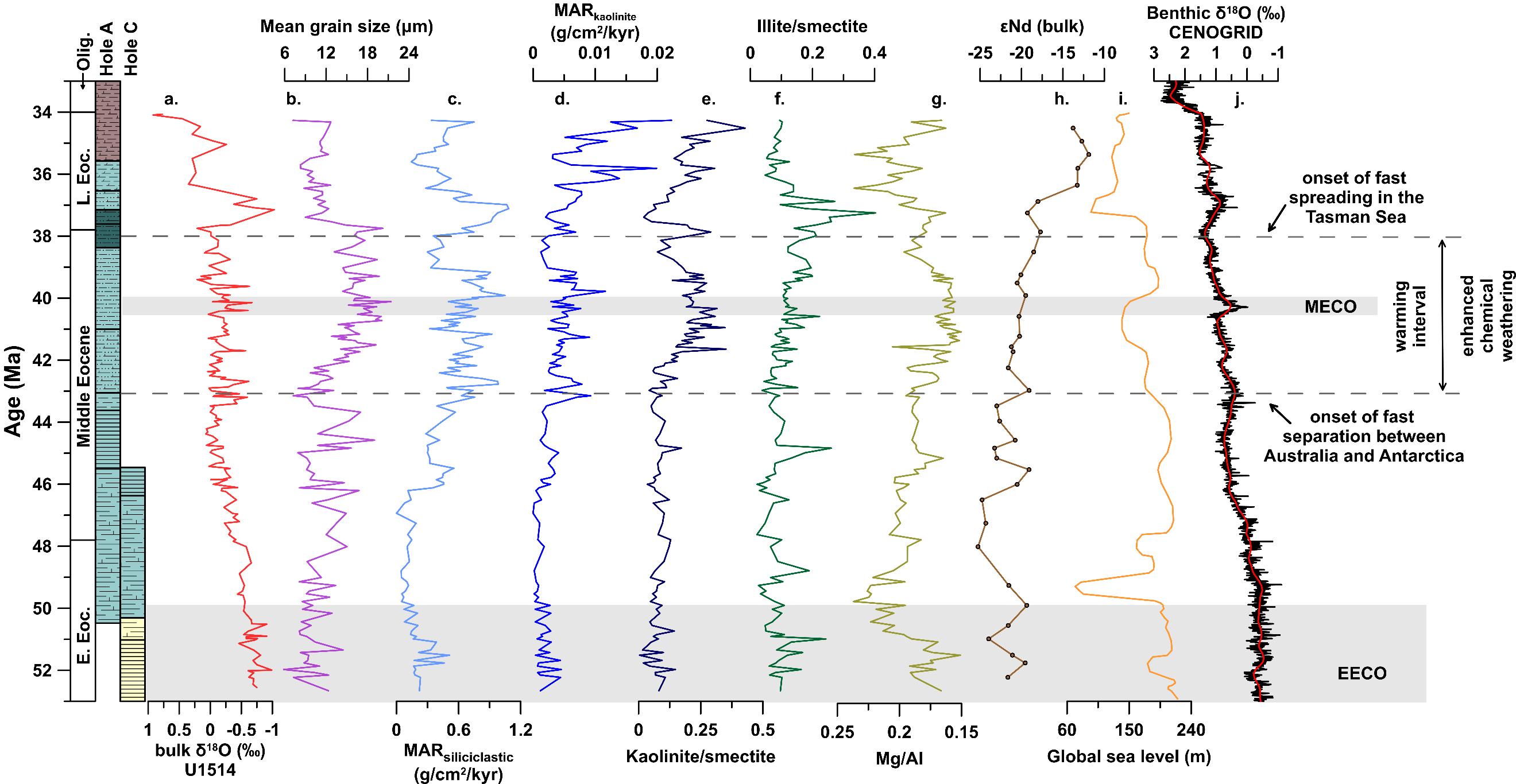Exploring Sedimentary Response to Eocene Tectonic and Climate Changes in the Southeast Indian Ocean
The Eocene was a critical period in Earth's climate history that encompassed profound climatic and oceanographic reorganization from the greenhouse conditions of the early Eocene to the icehouse state of the early Oligocene. This interval was also a period of extensive global plate reorganization, including the onset of fast separation between Australia and Antarctica at ~43 Ma, which finally allowed the generation of the Southern Ocean.
However, there are few records available from the climate- and tectonic-sensitive mid-high southern latitudes that span this entire interval of time.
Recently, the research team led by Prof. CHANG Fengming from the Institute of Oceanology of the Chinese Academy of Sciences (IOCAS) firstly reported the tectonic and climatic controls on sediment transport to the Southeast Indian Ocean during the Eocene.
The study was published in Global and Planetary Change on Sept. 28.
Researchers reconstructed the source-to-sink processes in the mid-high southern latitudes during 52-34 Ma by multi-proxy investigation of grain size, clay minerals, major and trace element concentrations, and Sr-Nd isotopic compositions of sediments from International Ocean Discovery Program (IODP) Site U1514 that drilled in the Mentelle Basin. Siliciclastic sediments at the study site were predominantly originated from distal southwestern Australian continent (e.g., the Yilgarn Craton) between 52 and 43 Ma, and influenced by volcanic input from the Naturaliste Plateau during 43-38 Ma, the sediment provenance was then transfered to proximal continental sources (i.e., the Neoproterozoic Perth Basin) between 37 and 34 Ma.
In addition, researchers found that the onset of fast separation between Australia and Antarctica at ~43 Ma not only caused an increased supply of volcanic materials from the Naturaliste Plateau between 43 and 38 Ma, but also released significant quantities of CO2 to the atmosphere that induced a ~5 Myr-long warming period in southwest Australia. The latter resulted in enhanced chemical weathering on the western Australian continent. This interval was a significant warming reversal that interrupted the long-term global cooling throughout the middle to late Eocene.
Furthermore, rapid terrigenous input associated with stronger physical erosion occurred during 38-37 Ma. Tectonic processes related to the sudden acceleration in seafloor spreading in the Tasman Sea during the abovementioned period, led to the abrupt sea level drop along southwest Australian coast, and therefore, resulted in enhanced erosion of the exposed shelf sediments. "Subsequently (37-34 Ma), the regional uplift in southwestern Australia and coeval climate cooling resulted in the diversion and inactivation of large drainage systems, thus blocking the transportation of sediment from distant regions, and contributions of sediments from proximal sources (e.g., the Leeuwin Block and Perth Basin) became more important," said WANG Wei, first author of the study.
"We reconstructed the source-to-sink processes in the Mentelle Basin during the Eocene and their links to climatic and tectonic changes in the mid-high southern latitudes for the first time, which will help to better understand the relationship between climate-tectonic and environmental changes in warmhouse conditions," said Prof. XU Zhaokai, the corresponding author.
This work was supported by the Marine S&T Fund of Shandong Province for Pilot National Laboratory for Marine Science and Technology (Qingdao), Strategic Priority Research Program of the Chinese Academy of Sciences, National Natural Science Foundation of China, Scientific and Technological Innovation Project financially supported by Qingdao National Laboratory for Marine Science and Technology, etc.

Fig. 1 Map showing the modern locations of IODP Site U1514 (red dot) and the main geological regions of South Australia.

Fig. 2 Sediment provenance discrimination plot for Site U1514.

Fig. 3 Comparison of typical proxies from Site U1514 and representative global climate and environment parameters during the Eocene.
Wang W., Colin C., Xu Z.K.*, Lim D.I., Wan S.M., Li T.G.* (2022). Tectonic and climatic controls on sediment transport to the Southeast Indian Ocean during the Eocene: New insights from IODP Site U1514. Global and Planetary Change, 217: 103956.
(Text by XU Zhaokai & WANG Wei)
Media Contact:
ZHANG Yiyi
Institute of Oceanology
E-mail: zhangyiyi@qdio.ac.cn
(Editor: ZHANG Yiyi)